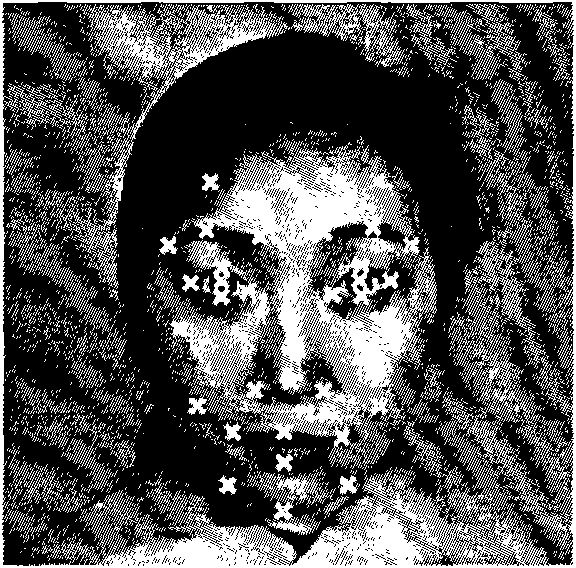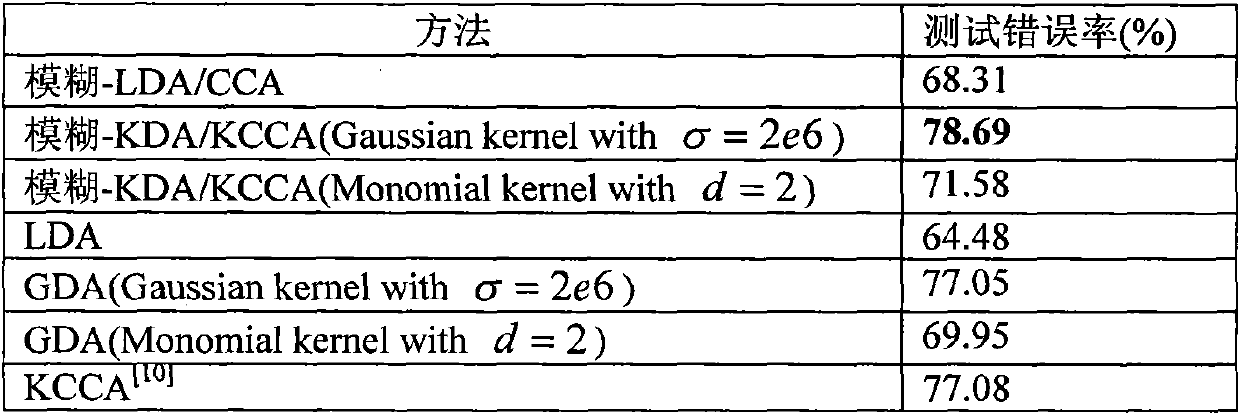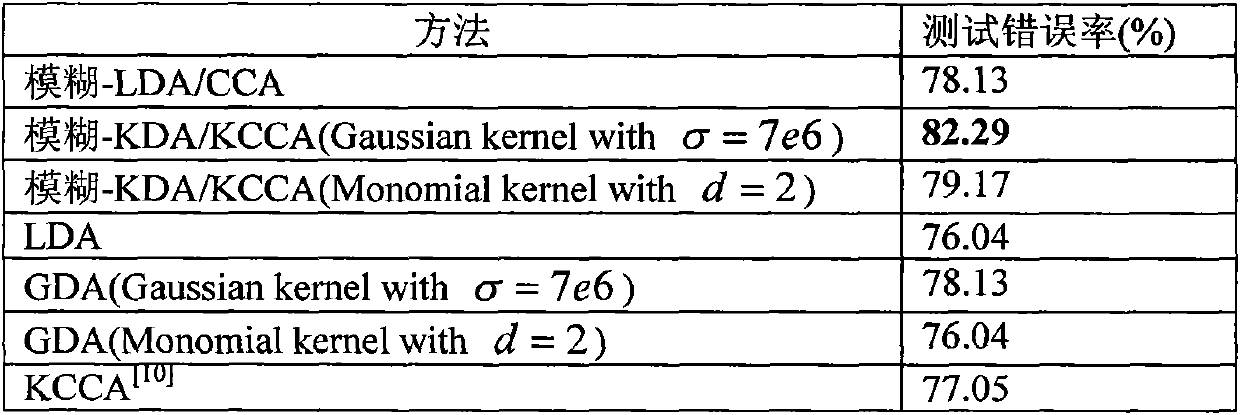Fuzzy discriminant analysis method applied to facial expression recognition
A technique of discriminant analysis and facial expression, applied in character and pattern recognition, computer components, instruments, etc., can solve problems such as immaturity of canonical correlation analysis
- Summary
- Abstract
- Description
- Claims
- Application Information
AI Technical Summary
Problems solved by technology
Method used
Image
Examples
Embodiment Construction
[0041] The technical solutions of the present invention will be further described below in conjunction with the drawings and embodiments.
[0042] 1. Use fuzzy K-nearest neighbors to specify class membership
[0043] First, for each training sample x i Create a class membership vector s associated with it ij (j=1, 2, . . . , c). Here, the Fuzzy K-Nearest Neighbor (Fuzzy K-NN) method is used to solve the class membership vector. Since the fuzzy K-NN method needs to define a distance metric to calculate the class membership of each data point, let the distance between two points x and y be, namely:
[0044] d ( x , y ) = | | x - y | | = ( x - y ) T (...
PUM
 Login to View More
Login to View More Abstract
Description
Claims
Application Information
 Login to View More
Login to View More - R&D
- Intellectual Property
- Life Sciences
- Materials
- Tech Scout
- Unparalleled Data Quality
- Higher Quality Content
- 60% Fewer Hallucinations
Browse by: Latest US Patents, China's latest patents, Technical Efficacy Thesaurus, Application Domain, Technology Topic, Popular Technical Reports.
© 2025 PatSnap. All rights reserved.Legal|Privacy policy|Modern Slavery Act Transparency Statement|Sitemap|About US| Contact US: help@patsnap.com



